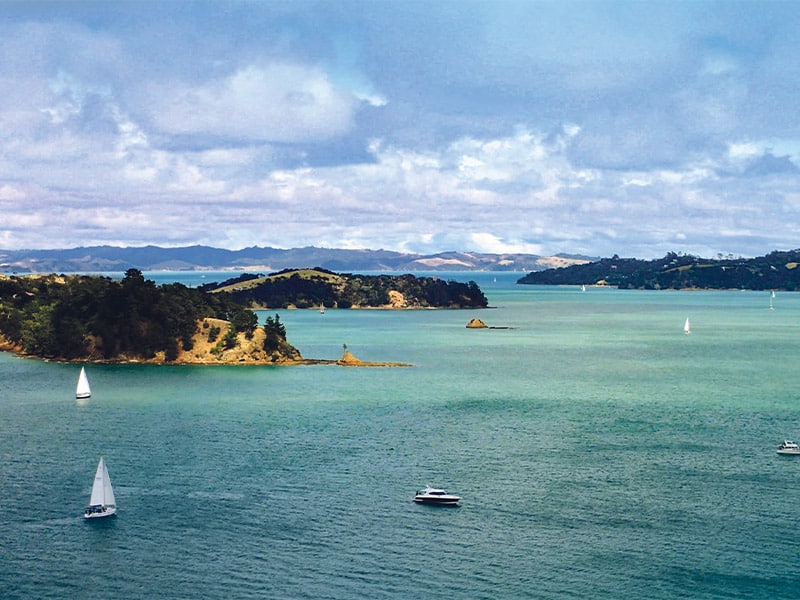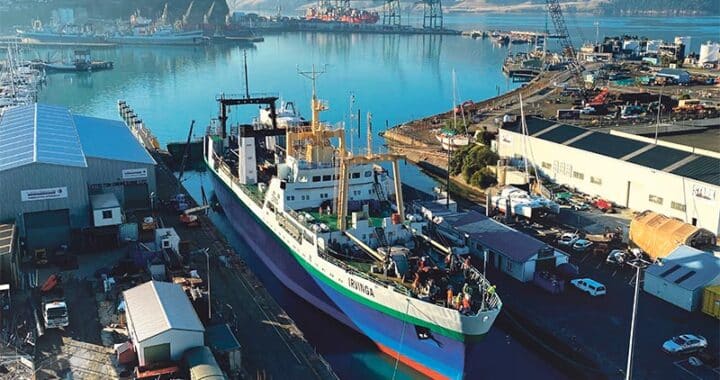Revitalising the Hauraki Gulf
4 min read
Consultation began on 17 January 2023 and will close at 5pm on 3 March 2023. Photo: RadishSlice |Licensed under CC BY-SA 4.0
Fisheries New Zealand is inviting people to have their say on a draft Fisheries Plan to help restore and protect the Hauraki Gulf.
Director fisheries management, Emma Taylor, said this is one of the key long-term fisheries management actions in the Government’s strategy, Revitalising the Gulf, which seeks to restore the waiora and mauri of one of New Zealand’s most important marine environments.
“The draft Fisheries Plan has three outcomes focused on the environment, sustainable utilisation, and
better governance, and includes new approaches for managing fisheries in the Hauraki Gulf.
“It seeks to support sustainable fisheries and the recovery and protection of key habitats and species, as well as encouraging greater local input to strengthen fisheries management and support a healthier Gulf for generations to come.”
The draft plan proposes a range of integrated management actions including:
- removing bottom trawl and Danish seine fishing except within limited areas or “trawl corridors” (subject to further consultation by mid-2023)
- improved management of scallop fisheries in the Hauraki Gulf
- restoring fisheries abundance to address localised depletion
- reviewing the management of intertidal harvesting
- supporting greater mana whenua and regional participation in fisheries management.
“Underlying these proposals is a commitment to an ecosystems-based fisheries management approach.
We recognise that all species in the fishery are connected and interdependent and this is reflected in the draft plan.”
MPI said the draft plan will be supported by the development of fisheries indicators and a monitoring framework to measure progress over time. If approved, it will be New Zealand’s first area-based fisheries plan.
“We encourage everybody with an interest in this national taonga to read the proposals and provide feedback.”
Consultation began on 17 January 2023 and will close at 5pm on 3 March 2023.
Forest & Bird: Plan not enough for ailing Hauraki Gulf
Forest & Bird said it was “deeply disappointed that bottom trawling, dredging, and Danish seining will still be allowed under the Hauraki Gulf Fisheries Plan.”
“We need to move beyond ripping up the seafloor to catch food. Bottom-contact fishing has no place in Tīkapa Moana, which is an ecosystem in crisis,” said Bianca Ranson, Forest & Bird’s Hauraki Gulf coordinator.
“Scallop beds across the Gulf have collapsed, and yet this Plan would still allow dredging? This fishing method is like taking a bulldozer through the Waitākere Ranges to harvest mushrooms.
“Continuing to dredge in a ‘marine park’ shouldn’t even be an option. Bottom trawling, dredging, and Danish seining must all end in the Gulf if we are to restore its mauri.”
On the other hand, the conservation group said it was pleased to see objectives “addressing sedimentation from land-based activities and supporting greater marine protection in the Gulf”.
“Everything is connected in an ecosystem, and we can’t continue managing fisheries as individual discrete species,” said Ranson. “An example of this interconnectedness is the explosion of kina barrens and decimation of kelp forests as a result of over-harvesting of snapper and rock lobsters.
“A recent High Court decision in Northland found that decision-makers must consider effects on marine ecosystems when setting rock lobster catch limits. A kina management plan for the Gulf must also consider the causes of kina barrens, not just their impacts.”
Forest & Bird also welcomed management objectives addressing forage fish.
“Forage fish are species such as pilchard that are often sold as bait,” said Ranson. “But they’re also an important food source for wildlife. We need to make sure our dolphins, whales, seabirds, and larger fish species have kai to eat.
“At the same time, we need to make sure our precious marine mammals and seabirds aren’t being killed as a result of fishing. That’s why achieving zero bycatch, as articulated in Te Mana o Te Taiao, is an important goal to implement in the Gulf – it’s a hotspot for rare and threatened species, such as the tāiko black petrel.”
Forest & Bird said these management objectives must be backed by sufficient resourcing to turn the tide on the Gulf’s decline.
“But unless we stop ripping up seafloor habitats via bottom trawling and dredging, the mauri of Tīkapa Moana will remain diminished,” said Ranson.
“The Fisheries Plan for the Hauraki Gulf will need to do five things to restore the mauri of the Gulf:
Stop destructive fishing methods including bottom trawling, Danish seining and tipa (scallop) dredging in the Hauraki Gulf
Reverse kina barrens to restore kelp forests
Adopt a zero bycatch goal to protect seabirds, marine mammals and other marine life
Ensure abundant forage fish for seabirds and marine mammals
Support MPI to work with councils to reduce sedimentation”



